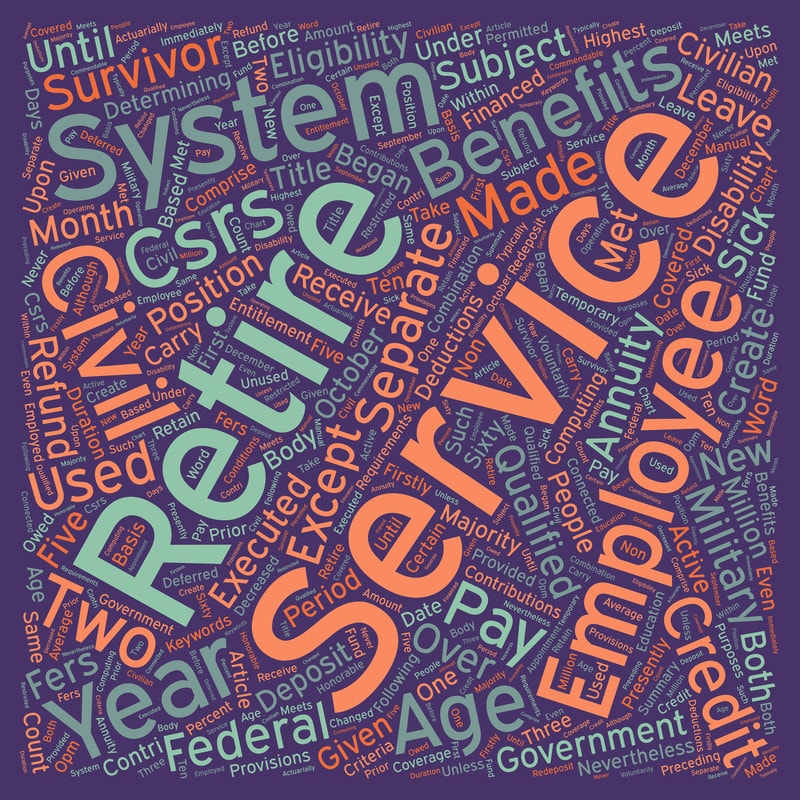There are two types of retirement systems for federal workers in the USA – FERS (Federal Employees Retirement System) and CSRS (Civil Service Retirement System). FERS was introduced in 1984 and federal employees could opt to convert from the older CSRS to FERS. Now all federal workers are automatically enrolled in FERS. Employees enrolled under both systems may be entitled to disability benefits – i.e. in addition to their basic benefits plan, they can receive a disability retirement annuity if they are injured or fall ill (physically or mentally) and cannot perform their customary work. Just as for social security disability benefits, medical chart review and analysis is an important initial process to determine disability. This kind of benefit is not workers’ compensation – it is paid whether or not the injury or illness is work related.
The CSRS System
CSRS is a defined benefit and employees under this system can contribute 7 – 8% of pay to the program and on retirement they receive a defined annuity throughout the rest of their life. They don’t have to pay into Social Security but have to contribute the Medicare tax. To receive CSRS annuity, the employee must be at least 55 years old, and have served in the federal government for 30 years. This annuity amounts to 1.5% of the employee’s salary for the first five years of service, 1.75% for the next five years, and 2% for the remaining years of service. For every additional year after 30 years of service, the employee’s annuity would increase by 2%. A federal worker who retires at the age of 55 with 30 years of experience would receive an annuity that amounts to 56.25% of their salary whereas a worker retiring at age 55 with 33 years of service would receive an annuity amounting to 62.25% of their salary.
Why the Transition to FERS?
Pension plans were no longer a feasible option as the average life expectancy continued to increase. Thus in the 1980s, the federal government and most corporations transitioned to savings – based retirement systems that have resulted in FERS for federal government employees and 401(k) in the private sector.
Employees enrolled in FERS receive a 3 – component benefits package that includes a pension, a Thrift Savings Plan, and Social Security. FERS also increased the minimum retirement age (MRA), adjusted on a sliding scale from 55 to 57.
| If you were born | Your MRA is |
| Before 1948
In 1948 In 1949 In 1950 In 1951 In 1952 In 1953 – 1964 In 1965 In 1966 In 1967 In 1968 In 1969 In 1970 and after |
55
55 and 2 months 55 and 4 months 55 and 6 months 55 and 8 months 55 and 10 months 56 56 and 2 months 56 and 4 months 56 and 6 months 56 and 8 months 56 and 10 months 57 |
Source: https://www.opm.gov/retirement-services/fers-information/eligibility/
Disability Retirement under FERS and CSRS
Employees opting for disability retirement annuity under FERS can be of any age, with at least 18 months of service. They must have become disabled, because of a disease or injury, for useful and efficient service in their current position. The disability must be expected to last at least one year. The employer must certify that they are unable to accommodate the employee’s disabling medical condition in his/her present position and that they have considered the employee for any vacant position in the same agency at the same grade/pay level, within the same commuting area, for which the employee is qualified for reassignment.
To qualify for disability retirement benefits, a CSRS employee must have worked with the federal government for at least 5 years.
- For employees enrolled under CSRS, the annuity is essentially the same as their regular retirement pension, except they will not have to pay a penalty fee for withdrawing from their pension early.
- FERS disability retirement beneficiaries receive 60% of their high-three salary average for the first year. After the first year, they receive 40% of their high-three salary average.
- A FERS employee must apply for Social Security Disability (SSDI) to qualify for federal disability retirement. However, they don’t have to be approved. (Similarly, to get approved for Social Security disability benefits, the employee doesn’t have to be approved for federal disability retirement.)If the employee is approved for Social Security Disability, there is an offset to their disability retirement annuity. That is, the employee will receive 60% of their high-three salary minus 100% of their SSDI benefit for the first year of receiving disability retirement benefits. After the first year, the employee will receive 40% of their high-three salary minus 60% of their SSDI. This offset applies only if the employee is approved for SSDI.
Medical Records Review Is an Important Consideration
When applying for disability retirement, employees will have to provide supporting medical evidence for medical record analysis purposes by the agency that has employed them. If the agency agrees with the evidence provided, they will agree to the disability application. Then the application is forwarded to the OPM (Office of Personnel Management). Employees can apply for disability retirement whether or not their agency approves of the application. The OPM also reviews all the material provided to them including the medical records as well as the agency’s testimony that the employee is unable to provide useful and efficient service. In case the agency’s testimony is absent or incomplete, the OPM will contact the agency for clarification. If the OPM approves the disability retirement application, and the employee’s disabling condition isn’t considered to be permanent, he/she will have to undergo periodic medical re-evaluations until the age of 60 to find out whether they are still suffering from the debilitating condition. However, if the disabling condition is determined to be permanent, there may be no need of further follow-up.
Disability Claims May Be Denied
Social security disability lawyers are often approached by federal employees who are approved for SSDI but are later denied federal disability retirement under CSRS or FERS by the OPM. This may be because of the differing legal standards for the two types of disability claims.
- To be eligible for SSDI, the applicant must prove that he/she is unable to engage in any substantial gainful activity due to a medical condition that can be established by objective evidence. The condition must be one that lasts for at least one year.
- To be eligible for FERS/CSRS disability retirement, the applicant has to prove that he/she is unable to perform useful and efficient service in his/her current position because of disease or injury, and accommodations cannot be made to allow him/her to continue working, and he/she does not qualify for reassignment.
While the social security definition of disability requires the applicant to be unable to perform any type of substantial work, the FERS/CSRS definition requires only that the applicant is unable to perform useful and efficient service in only his/her current job. Often, it is the inadequate medical evidence in the federal disability retirement application that leads to denial of the claim. It is here that the counsel and support of an attorney and reliable medical review solutions assume great significance. Attorneys are knowledgeable and experienced in FERS/CSRS disability law and will ensure that everything pertinent to the claim is submitted, and that the claim forms are complete and accurate. They will also ensure that all medical information necessary for a successful outcome is included in the application.




